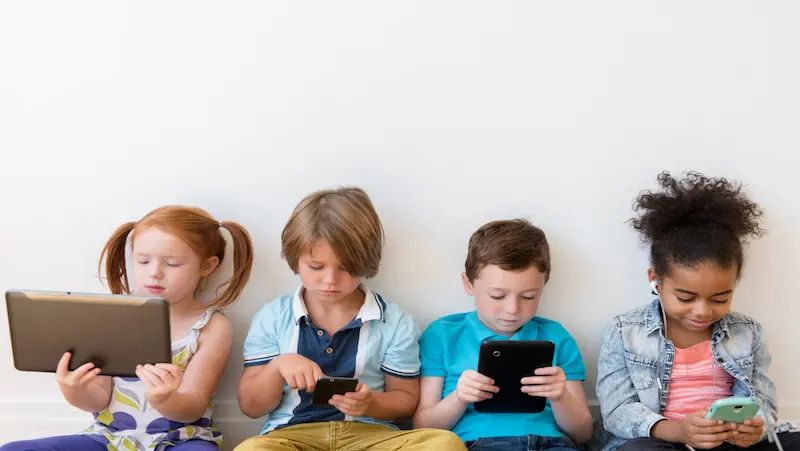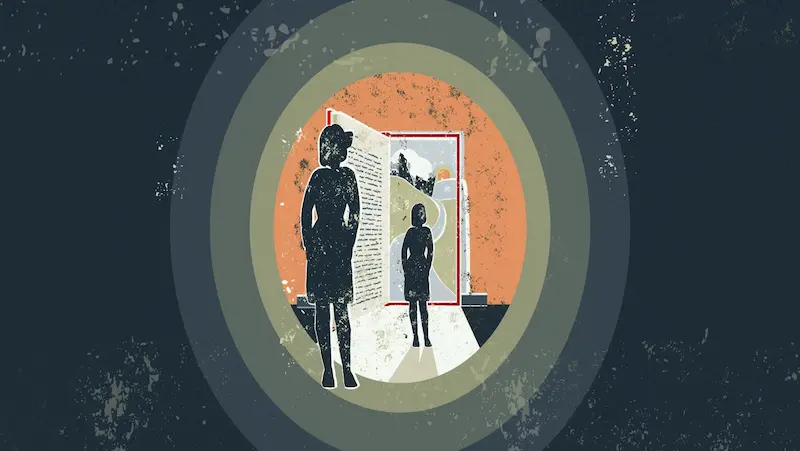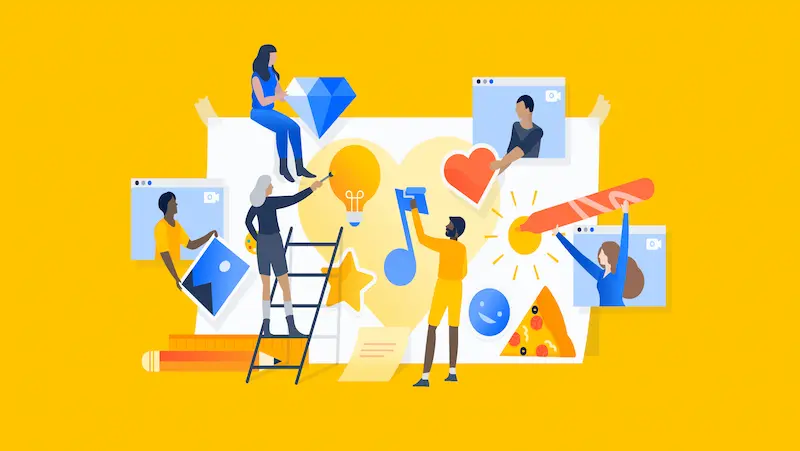Ever noticed how kids today are practically born with a tablet or smartphone in hand? Well, that digital world they’re growing up in isn’t just about games and videos. It’s also a fantastic platform for nurturing their creativity and imagination through something called “Digital Storytelling For Kids” Imagine combining the magic of traditional storytelling with cool technology – sounds intriguing, right?
In this digital age, kids can dive into a whole new realm of storytelling where they can create, explore, and share their own imaginative tales using a blend of words, images, and even interactive elements. So, buckle up as we explore the exciting world of Digital Storytelling for kids!
Table of contents
- Understanding Digital Storytelling For Kids
- The Digital Tools of the Trade
- Unleashing Creativity through Digital Storytelling
- Visualizing the Narrative
- Interactive and Collaborative Digital Storytelling
- Collaborative Digital Storytelling: Unlocking the Power of Cooperation
- Conclusion
- Frequently Asked Questions
Understanding Digital Storytelling For Kids
In the vast realm of storytelling, a new frontier has emerged in the form of digital storytelling. The digital landscape offers storytellers a canvas to paint their narratives with vibrant colors, engaging interactions, and immersive experiences. Just like traditional tales, digital stories are built upon fundamental elements that give life to the narrative and captivate the audience’s imagination. In this chapter, we’ll explore the key components that form the essence of a digital story: characters, plot, and setting.

Characters: Bringing Imaginary Friends to Life
Characters are the heart and soul of any story, whether told around a campfire or within the pixels of a screen. They are the vessels through which emotions, motivations, and conflicts flow. In the digital realm, characters transcend the boundaries of ink and paper, transforming into interactive companions. From the brave adventurer in a role-playing games for kids to the quirky avatar in an animated short, these digital protagonists invite us to experience their journeys firsthand.
Plot: Crafting Engaging Storylines
At the core of every memorable story is a compelling plot. It’s the roadmap that guides characters through a series of events, challenges, and transformations. In the digital domain, the plot takes on new dimensions. Users become active participants, steering the narrative’s direction through their choices and interactions. This interactivity adds layers of depth, transforming passive observers into co-authors of the story.
Setting: Creating Imaginary Worlds
Imagine a world where castles float in the sky, time travel is a casual affair, and talking animals share wisdom beyond imagination. This is the power of setting in digital storytelling. The setting transcends the boundaries of reality, offering storytellers an expansive canvas to paint their visions. Through detailed visuals, intricate soundscapes, and interactive exploration, digital stories for kids transport audiences to uncharted territories.
The Digital Tools of the Trade

Exploring Digital Storytelling Software and Apps
In the ever-evolving landscape of technology, we’re spoiled for choice when it comes to digital storytelling tools. From user-friendly apps to more complex software, the options are as diverse as the short stories for kids we want to tell. Platforms like Twine, Adobe Spark, and StoryMapJS offer a mix of simplicity and versatility, allowing beginners and experts alike to experiment with interactive elements, images, and text.
Choosing the Right Medium: Interactive Books, Animation, and More
Ah, the beauty of the digital world lies in its varied mediums. Whether you’re aiming for an interactive eBook, an animated short film, or an immersive web experience, each medium has its unique charm. Interactive eBooks for kids invite readers to be a part of the story, making choices that steer the narrative’s course. Animation, on the other hand, breathes life into characters and worlds, adding that extra flair to your storytelling palette.
Storyboarding: Planning Your Digital Story
Ahoy, planners and dreamers! Before diving headlong into the digital ocean, it’s wise to have a map—enter storyboarding. Just like a filmmaker plots scenes before shooting, a storyboard outlines your digital tale. Sketching each frame, scene, or interaction helps you visualize the flow and pacing of your story. It’s the compass that prevents you from sailing adrift and guides you toward a well-structured narrative.
Unleashing Creativity through Digital Storytelling

Introduction: Captivating Your Audience from the Start
Every journey begins with a single step, and so does your story. The introduction is your golden opportunity to grab your readers’ attention and reel them into your narrative world. Consider it the first impression you make – make it count! A compelling introduction sets the stage, introduces key characters, and hints at the conflict to come. Engage the senses, paint vivid imagery, and weave curiosity into your opening lines.
Conflict and Rising Action: Building Tension and Excitement
Ah, conflict – the driving force behind every great story. This is where you introduce challenges, obstacles, and dilemmas that your characters must grapple with. As the story unfolds, ramp up the tension. The rising action is a series of escalating events that keep readers eagerly flipping pages, eager to discover what happens next. But remember, it’s not just about throwing in random obstacles.
Climax and Resolution: Bringing Closure and Satisfaction
The climax is the heart-pounding, make-or-break moment of your story. It’s the point of no return where all the built-up tension and conflict culminate. The stakes are at their highest, and the characters’ fates hang in the balance. Will they overcome? This is where you reward your readers’ investment by delivering a payoff that’s both satisfying and unexpected.
Visualizing the Narrative

Illustrations and Images: Conveying Emotion and Atmosphere
Imagine flipping through the pages of a book and stumbling upon a beautifully crafted illustration that perfectly captures a pivotal moment. The furrowed brows of characters facing a dilemma, the sun setting over a sprawling landscape, or the intricate details of an artifact can all be conveyed through carefully designed visuals.
Animation and Multimedia: Adding Life to Characters and Settings
Incorporating animations and multimedia elements can breathe life into characters and settings, making them jump off the page or screen. Through animation, characters can express their personality through movement, giving us insight into their thoughts and feelings beyond what words can express. Moreover, animated settings can evolve, shifting seamlessly to match the tone of the story.
Sound and Music: Enhancing the Storytelling Experience
Close your eyes and imagine your favorite movie scene. What’s often the first thing that comes to mind? The music that played during that scene, right? Sound and music are integral to storytelling, capable of evoking emotions and setting the pace of a narrative. A haunting melody can heighten tension, while a cheerful tune can amplify joy.
Interactive and Collaborative Digital Storytelling

Choices and Branching Paths: Allowing Reader Participation
Remember those “Choose Your Own Adventure” epic books for kids that had you flipping back and forth to different pages, making choices that shaped the story’s direction? The digital age has breathed new life into this concept. Through choices and branching paths, readers are no longer passive observers but active co-creators of the narrative. They’re presented with decisions that alter the storyline, steering the plot toward various outcomes.
Hyperlinks and Navigation: Creating a Nonlinear Storytelling Experience
Hyperlinks aren’t just for navigating the web anymore – they’re transforming storytelling too. In nonlinear storytelling, the text becomes a web of interconnected nodes, allowing readers to explore the narrative in a non-sequential manner. These hyperlinks can lead to backstories, side characters’ perspectives, or even real-world references that enrich the reader’s understanding.
Gamification: Making Digital Stories Playful and Educational
Who said reading couldn’t be playful? Gamification has made its way into the world of digital storytelling, turning the experience into a game-like adventure. Elements like achievements, progress tracking, and rewards create an engaging atmosphere, motivating readers to uncover hidden facets of the narrative.
Collaborative Digital Storytelling: Unlocking the Power of Cooperation

Virtual Story Circles: Sharing and Building upon Ideas
Picture this: a cozy virtual campfire where storytellers from around the globe gather, not physically, but through the magic of the internet. These virtual story circles are like brainstorming sessions on steroids! We come together to share the nuggets of ideas we’ve been brewing, the characters whispering in our ears, and the worlds waiting to be explored. It’s like a potluck of creativity, where each of us brings a dish to the table – in this case, a story spark – and we collectively whip up a feast of narratives.
Group Projects: Collaborating to Create Unique Digital Stories
Ever wondered what happens when multiple creative minds merge? You get a symphony of storytelling! Group projects in the virtual realm are where the real magic happens. Imagine joining forces with fellow writers, illustrators, and maybe even a musician or two, all working in harmony to craft a digital story that transcends individual capabilities. From weaving together plotlines to breathing life into diverse characters, the process becomes a true adventure.
Online Platforms and Communities: Connecting Young Storytellers
Thanks to the digital era, the walls that once confined our bedtime stories for kids to our notebooks have crumbled. Online games for kids platforms and communities are bridging geographical gaps, connecting young storytellers who might have never crossed paths otherwise. From forums buzzing with writing prompts to social media groups dedicated to specific genres, these spaces are our creative playgrounds. They’re where we share our struggles, celebrate our victories, and offer feedback that nurtures growth.
Conclusion
In closing, embarking on this digital storytelling journey has been a remarkable experience that has illuminated the boundless potential of human creativity coupled with technology. As we’ve woven intricate narratives and crafted immersive worlds, we’ve not only harnessed the tools at our disposal but also breathed life into timeless tales.
Our journey reminds us that while technology enhances our storytelling, it’s the core of humanity within these narratives that truly resonates. As we continue forward, let’s embrace the ever-evolving digital landscape, knowing that our stories, whether old or new, will forever connect us in the tapestry of human expression. So, here’s to embracing innovation while treasuring the heart of storytelling – a fusion that will undoubtedly shape our narratives for generations to come.
To get your hands on more educational and free resources on coding for kids, robotics for kids, financial education for kids, etc., do check out the BrightCHAMPS Page now!
Frequently Asked Questions
A1. Digital storytelling is using technology to create and share stories with images, text, and multimedia. It benefits kids by enhancing their communication skills, creativity, and tech proficiency.
A2. Common tools include “Storybird” for visual stories, “Toontastic” for animations, and platforms like YouTube Kids and blogs for sharing.
A3. Through digital storytelling, kids craft unique narratives, select visuals, and explore ideas, fostering creativity and imaginative thinking.
A4. Kids can develop writing, visual communication, critical thinking, and collaboration skills while creating digital stories.
A5. Generally, kids around 5-6 can start with simple tools, while older ones can explore more complex platforms with supervision.
A6. They can provide guidance, offer themes, and encourage experimentation, helping kids feel confident in their storytelling.
A7. A captivating story includes relatable characters, an engaging plot, vibrant visuals, and a clear message.
A8. Parents should ensure safe online environments, teach digital etiquette, and guide kids about sharing personal information cautiously.
A9. Creating digital stories enhances vocabulary, sentence structure, and storytelling abilities, promoting language and literacy growth.


 We are an army of educators and passionate learners from BrightChamps family, committed to providing free learning resources to kids, parents & students.
We are an army of educators and passionate learners from BrightChamps family, committed to providing free learning resources to kids, parents & students.













